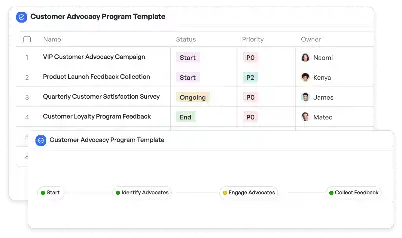Vibration Measurement Protocol
Achieve project success with the Vibration Measurement Protocol today!

What is Vibration Measurement Protocol?
The Vibration Measurement Protocol is a structured framework designed to monitor, analyze, and interpret vibration data in various mechanical and structural systems. This protocol is essential in industries such as manufacturing, aerospace, and civil engineering, where vibration analysis plays a critical role in ensuring operational safety and efficiency. By standardizing the process of vibration measurement, this protocol helps identify potential issues like misalignments, imbalances, or wear and tear in machinery. For instance, in a manufacturing plant, the Vibration Measurement Protocol can be used to monitor conveyor belts, ensuring they operate within safe vibration thresholds to prevent breakdowns. The protocol's importance lies in its ability to provide actionable insights, enabling timely maintenance and reducing the risk of costly failures.
Try this template now
Who is this Vibration Measurement Protocol Template for?
The Vibration Measurement Protocol template is tailored for professionals and organizations involved in vibration analysis and monitoring. Typical users include mechanical engineers, maintenance teams, quality assurance specialists, and researchers in fields like aerospace and civil engineering. For example, a maintenance engineer in a wind turbine facility can use this template to monitor rotor vibrations, ensuring the turbine operates efficiently and safely. Similarly, a civil engineer working on a bridge project can apply the protocol to assess seismic vibrations, ensuring the structure's stability. This template is also valuable for academic researchers conducting experiments on vibration patterns in various materials and systems.

Try this template now
Why use this Vibration Measurement Protocol?
The Vibration Measurement Protocol addresses specific challenges in vibration analysis, such as inconsistent data collection, lack of standardized procedures, and difficulty in interpreting complex vibration patterns. By using this template, users can ensure consistent and accurate data collection, which is crucial for identifying anomalies and predicting potential failures. For instance, in an industrial pump system, the protocol can help detect early signs of cavitation or bearing wear, preventing costly downtime. Additionally, the template provides a clear framework for sensor calibration and data analysis, making it easier for teams to collaborate and make informed decisions. Its structured approach ensures that all critical aspects of vibration measurement are covered, from initial data collection to final report generation.

Try this template now
Get Started with the Vibration Measurement Protocol
Follow these simple steps to get started with Meegle templates:
1. Click 'Get this Free Template Now' to sign up for Meegle.
2. After signing up, you will be redirected to the Vibration Measurement Protocol. Click 'Use this Template' to create a version of this template in your workspace.
3. Customize the workflow and fields of the template to suit your specific needs.
4. Start using the template and experience the full potential of Meegle!
Try this template now
Free forever for teams up to 20!
The world’s #1 visualized project management tool
Powered by the next gen visual workflow engine




